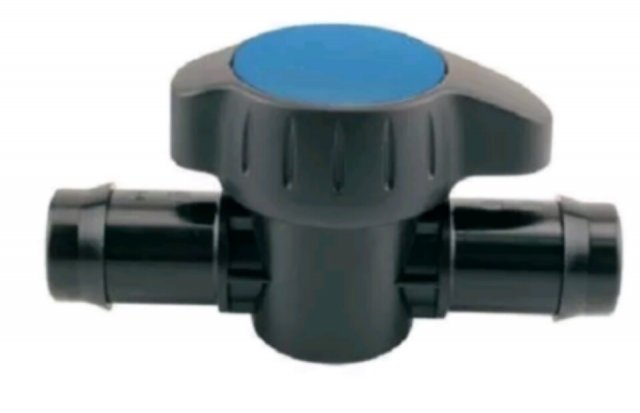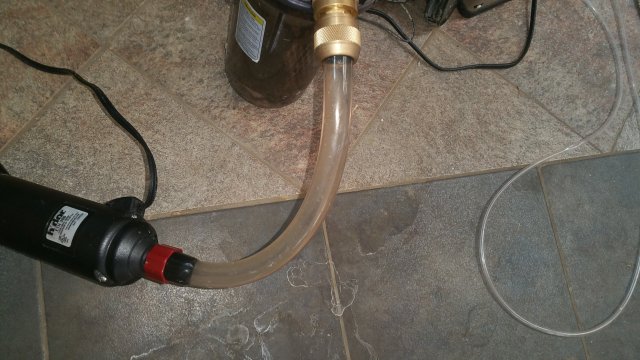In my opinion I would not bother with the sock filter above the trickle chamber. I always ran the blue white pads and they will do a nice job for you.Seems like the black would be good for prohibiting algae growth I've just seen pics of cracked tubing between the ribs. Do they use standard barb fittings as well? I actually think I could do a filter sock in the top of the trickle chamber and use the draw string or ty wrap to keep it affixed. I would just have to make a small gap for the string to fit snug. See pic, under tray lid. Only thing is this would already be the finest filtration correct? Thus eliminating the need for any further pads/floss?
View attachment 1267982
need plumbing/sump suggestions on 92 gallon acrylic for overstocked cichlid setup
- Thread starter TimTheWiner
- Start date
Best bet is to submerge the ceramic rings. Like I said plastic totes work wonders. So do buckets. Way cheaper then glass and easier to drill too.
Ok, really great insight and thanks for pics. Did u use that for returns as well or drains only? I think I am looking for about a 750 gph return pump (Jebao seems good bang for buck), AFTER about 6 ft in head pressure. Any recommendations on a single 1" durso (upsized in overflow to 1.25") with two 3/4" returns vs Herbie 1" main/.75" emergency and single 3/4" return? I think I'm already going to have some noise from trickle tower and/drain to secondary sump so I'm not sure if it's worth the extra silencing of the Herbie or if it's more of a backup.
I use the black pond tubing end to end., intake to return to tank.
The 1" black pond tubing in my junk bin was an old return, you can see how the two 90 elbows formed a hook to go over the side of the tank. This piece was replaced by spray bar for better surface agitation and more appealing looks.
I use very simplistic overflows in my tanks... I will let someone else with more expertise with overflows answer your overflow noise questions.
The 1" black pond tubing in my junk bin was an old return, you can see how the two 90 elbows formed a hook to go over the side of the tank. This piece was replaced by spray bar for better surface agitation and more appealing looks.
I use very simplistic overflows in my tanks... I will let someone else with more expertise with overflows answer your overflow noise questions.
Do I need a ball valve on the return(s) for any reason? I can't see turning down thr flow, especially if it's a DC pump that can be turned them with a controller but more of a safety measure? What about these barb style ball valves below. Effective or should I just get a barb to slip fitting and do a reg PVC gate/ball valve?


With a setup like that, you will have to worry about the water draining out of your current sump. Unless you add some kind of weir setup, as soon as you shut off the power, the water in the top sump will drop to the bottom one.Height is definitely the main issue. The acrylic tower is 16" high, the cabinet about 28". If I decide to have the tower elevated to drain into the 20 gallon then then I'm up to 24" at the top of the tower. That leaves only 4" to take the top off for maintenance. I can't see any way to incorporate a sock unless it was literally inline with the pvc/drain tube. Can a square pad on the trickle tray above the bioballs be close to the effectiveness of a sock? I am open to a small refugium as some point, would just like room for some ceramic rings and some other pads/sponges. Can the heaters go right next to the return pump? I posted a couple more pics below. First is with the footprint of the 20G, very tight. Would actually have to remove the bulkhead on the tower, cover the hole with an acrylic piece and recut a hole on the right side. Second pic is with the footprint of a 15 gallon my LFS has. Offers a bit more room for maintenance and supplies in cabinet.
View attachment 1267964
View attachment 1267965
You can get equations for the height of water for your weir for a given flowrate online.A more powerful pump will keep a bit more water "in action" in the system giving you a bit more settled overflow.
We did similar problems on a larger scale in a hydraulics class dealing with pier supported roads transversing spillways. Most of the equations are all empirical, and I doubt they would scale down properly. Depending on your tooth/gap dimensions, you should be able to push 1500 gph through 30" of teeth with moderately deep gaps. If it doesn't work, just make the gaps deeper. Better yet, call a custom acrylic tank shop, they should be able to give you a better answer than me. (quote from following link)Wikipedia said:Flow measurement
Weirs allow hydrologists and engineers a simple method of measuring the volumetric flow rate in small to medium-sized streams/rivers or in industrial discharge locations. Since the geometry of the top of the weir is known and all water flows over the weir, the depth of water behind the weir can be converted to a rate of flow. However, this can only be achieved in locations where all water flows over the top of the weir crest (as opposed to around the sides or through conduits/sluices) and at locations where the water that flows over the crest is carried away from the structure. If these conditions are not met, it can make flow measurement complicated, inaccurate or even impossible.
The discharge calculation can be summarised as:
Q = C L H n {\displaystyle Q=CLH^{n}}
Where
However this calculation is a generic relationship and specific calculations are available for the many different types of weir. Flow measurement weirs must be well maintained if they are to remain accurate.[3][4]
- Q is the volumetric flow rate of fluid (the discharge)
- C is the flow coefficient for the structure (on average a figure of 0.62).
- L is the width of the crest
- H is the height of head of water over the crest
- n varies with structure (e.g., 3/2 for horizontal weir, 5/2 for v-notch weir)
https://www.google.com/url?sa=t&rct...h.html&usg=AFQjCNGOr0NuFbBHO3ErEdlB6IxgcoWHZQ
Filter pads are available in whatever micron you want.I'm assuming most pre filter and filter pads are not as fine as a 100 or 200 micron sock.
It would be, but if you only use the finest filtration, you will need to endlessly replace them. The idea is to have multiple layers of mechanical filtration, with each layer catching a different size dirt.See pic, under tray lid. Only thing is this would already be the finest filtration correct? Thus eliminating the need for any further pads/floss?
Thanks for the insite. I understand the risk of the first elevated wet/dry setup but it the drain from it is currently 3" from the bottom so it should only drain down to that point correct. It's not like the drain is on the bottom. Also I am hoping that with the baffles of the secondary sump set about half the height of the tank then it should leave about 7 gallons of "air space" that could fill before a risk of flooding.
True. As long as you thought of it, it shouldn't be an issue. I just know from my own experience, that I have built things without thinking of a little thing like that and I have paid for it big time.Thanks for the insite. I understand the risk of the first elevated wet/dry setup but it the drain from it is currently 3" from the bottom so it should only drain down to that point correct. It's not like the drain is on the bottom. Also I am hoping that with the baffles of the secondary sump set about half the height of the tank then it should leave about 7 gallons of "air space" that could fill before a risk of flooding.
Should I use some kind of PVC Y fitting or street ell to bring the main drain and emergency drain into 1 before entering the trickle tray or is it the hurting flow/drain speed by bringing a 1" drain and a 3/4" drain into a single 1" line. This would only be for a few inches before the trickle tray cover. If not I bypass the trickle tray with the 3/4" emergency drain and just drain it to the secondary sump.







